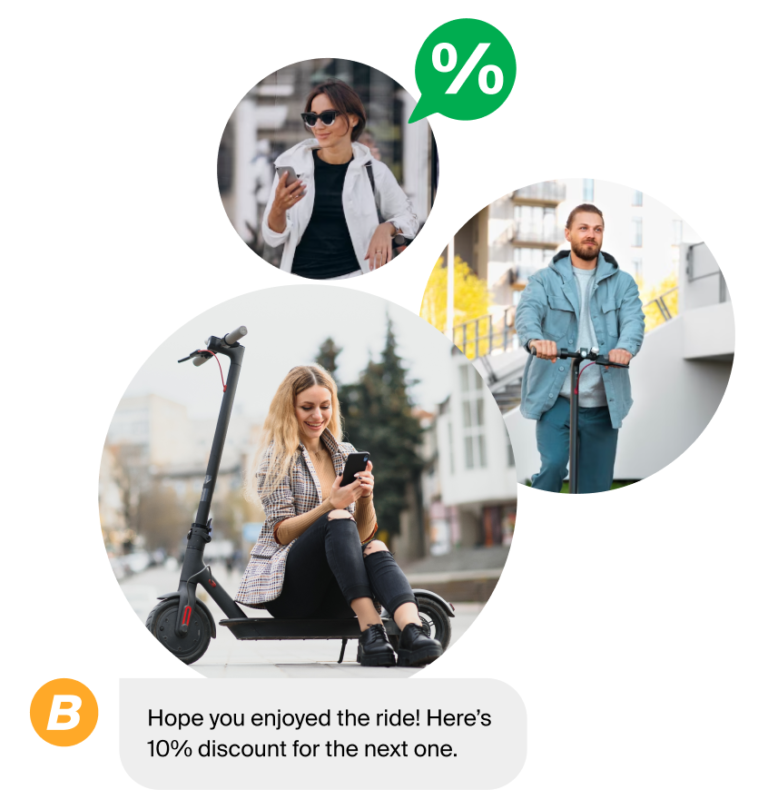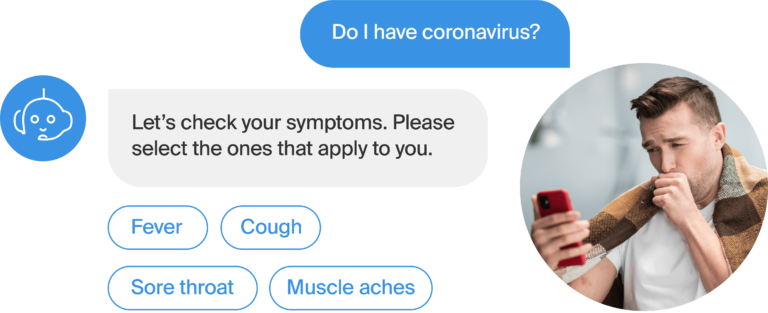Consumer expectations of immediacy and personalisation have set new rules of engagement for modern brands. Delivering the right message at the right time via the right channel has become vital to driving customer actions and building loyalty, but only 40% of business leaders believe they’re doing a good job in this respect.
To successfully engage consumers on their preferred channels, organisations need to prioritise new technology adoptions. As they start to evaluate use cases beyond email and SMS, Communication Platform as a Service (CPaaS) emerges as a solution to help them reach their objectives. A 2022 study by Metrigy reveals that over 60% of enterprise respondents plan to increase their CPaaS spending by 2025, while Gartner predicts this solution will be used by 90% of global businesses by 2026, up from 30% in 2022.

In this article, we’ll discuss how different industries are using CPaaS to engage, convert, and retain their customers.
What brands look for in a customer engagement platform
As pointed out in our recent interview, the main driver of CPaaS adoption is the changing mindset that “pressures enterprises to provide seamless, integrated experiences across multiple channels”. Consumers are becoming more critical of brand communications, and CPaaS provides tools for businesses to meet their growing expectations.
By integrating popular channels such as SMS, Viber, WhatsApp, Push, and RCS, the platform enables brands to tailor their communications to customers’ needs and preferences. They can send bulk campaigns or personalised messages and monitor performance to evaluate the success of their efforts. In addition to this, CPaaS is easy to manage, which is one of the key requirements of businesses looking to adopt it.
According to ROCCO’s CPaaS Market Impact Report, CPaaS offers the following key advantages:
- Affordability through cloud-based implementations that require less investment than managing an on-site infrastructure
- Multi-tenancy as CPaaS enables simultaneous interactions with multiple customers
- Versatility of use cases for a number of different industries
- BI support through the available insights on customer engagements
- Scalability enabling enterprises to easily handle surges in traffic and scale down as needed
With the ability to deploy it easily and use it strategically, enterprises can address a wide variety or use cases across industries.
Use Cases for CPaaS in the Banks and Financial Services Industry (BFSI)
The ROCCO report revealed that Finance and Insurance organisations lead the way in CPaaS adoption, with 30% of respondents showing interest. Their need to adopt new communication technologies is driven by notably high customer expectations. As discussed in our blog on communication personalisation in finance, 73% of consumers don’t feel their banks, insurance companies, and wealth management organisations are sufficiently customer-centric.
CPaaS enables these institutions to open additional CX touchpoints, securely deliver relevant status updates, and provide personalised consultancy across customer-preferred channels. Another important use case for CPaaS in the BFSI sector is fraud prevention as the platform helps streamline OTP traffic and provide convenient methods of user authentication.

Use Cases for CPaaS in Information and Communication
The Information and Communication sector was the second most dominant group in the ROCCO research, with 24% of respondents expressing interest in CPaaS. These companies are seen as leaders in developing business communications infrastructure and tools, with a growing focus on new opportunities for engaging customers. While many of them may adopt CPaaS for their internal purposes, they are also looking to deliver it as a solution to their B2B client base. Mobile Operators are an important segment of this group and are predominantly interested in CPaaS as a means of strengthening their enterprise portfolio.
Use Cases for CPaaS in Retail and Ecommerce
With modern commerce relying on instant and relevant offers, retail and ecommerce organisations are prioritising cross-channel engagements to stay on top of their customers’ expectations. According to Genesys, 62% of respondents value receiving personalised communications when they need them and on the channel they want. In 2022, 37% of consumers have contacted a brand using a private messaging channel, and this figure is even higher in the group of those aged 45 or less, where 50% of respondents answered positively.
CPaaS enables retail and ecommerce businesses to open more channels and influence consumer buying behaviour. They can do this by sending coupon codes or recommended product notifications based on past actions to improve conversions and reduce shopping cart abandonment rates. In addition, CPaaS helps them automate purchase and order updates, provide delivery notifications, as well as strategically engage consumers post-purchase.
Use Cases for CPaaS in Logistics and Transport
Logistics and transport is another apparent candidate for customer engagement platform adoption. In this year’s Engagement Benchmarks report by MoEngage, 41.20% of Europeans said they rely on SMS to get shipping updates and alerts. An interesting insight is that 18.4% of those younger than 34 prefer to have such alerts sent via Push Notifications.

CPaaS helps marketers in this sector accommodate the needs of different audience groups by providing integrations with multiple channels. Moreover, it can be used to streamline dispatch communications, as well as help in incident management by enabling instant updates on service disruptions or emergencies. In addition to this, messaging for shared mobility companies can help increase signups, promote loyalty programs, and provide immediate support.
Use Cases for CPaaS in Healthcare
The healthcare sector has been undergoing a major digital transformation over the past few years. Hospitals, medical centres, private health practice offices, and other institutions have been among the first ones to adopt automated appointment scheduling and reminders to improve patient experience. Today, 62% of patients prefer digital notifications like email and text over traditional communications and 42% value the ability to choose their communication channel with their healthcare provider.
For healthcare institutions looking to optimise their current SMS and email strategies while introducing additional patient engagement channels, CPaaS offers a convenient solution. Beyond appointment scheduling, they can engage patients via popular messaging apps such as Viber and WhatsApp with post-treatment surveys or emergency notifications. They can use it for chronic disease management or mental health support to patients with recorded medical conditions.
An additional strategy these institutions should consider is using AI chatbots for healthcare. This tool can increase availability and provide immediate assistance or even triage 24/7.

Use Cases for CPaaS in Travel and Hospitality
While travel planning is supposed to be an enjoyable experience, many travellers face frustrations when managing bookings, reservations, and transport. This is why hotels, restaurants, booking websites, and other organisations in Travel and Hospitality increasingly adopt customer engagement platforms. With 84% of travellers considering user experience-related issues the most frustrating part of travel planning, organisations in this sector need to streamline communications across multiple touchpoints and channels.
To offer immediate support and assistance, vendors can use WhatsApp and Viber, which support text messages, calls, rich media, etc. In addition, they can send booking confirmations and travel itineraries through SMS or Push, depending on the customers’ preferences. A detailed guide on using cross-channel communication in this sector can be found here.
Conclusions
The versatility of CPaaS makes it an ideal solution for any business vertical. It can also provide significant value in education, gaming, real estate and multiple other industries looking to establish real-time, cross-channel connections. As they continue to prioritise customer experiences, CPaaS adoption is likely to continue growing, as projected by industry analysts.
For additional details on how you can use CPaaS, visit our Business Communication Suite page. Feel free to fill out the form to let us know if you’re interested to start using it.

